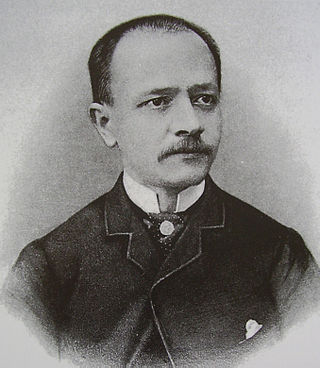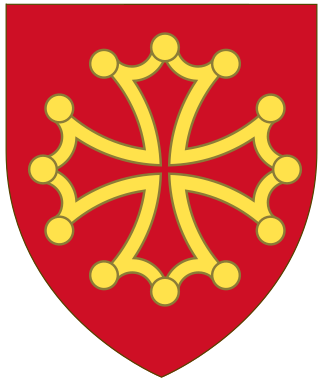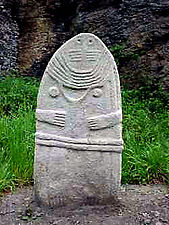
The Province of Languedoc is a former province of France. Most of its territory is now contained in the modern-day region of Occitanie in Southern France. Its capital city was Toulouse. It had an area of approximately 42,700 square kilometers.

Auguste Molinier was a French historian.

The following is a list of the 314 communes of the Tarn department of France.
Since 1985, the French Ministry of Culture and Communication has pursued a policy of preserving and promoting France's heritage. Historic towns and districts have been designated Villes et Pays d'Art et d'Histoire.

St Saviour is one of the ten parishes of Guernsey. It is situated on the west coast of the island, west of the parish of Castel, east of St Pierre du Bois, and south of Perelle bay.

Montseny is a mountain range west of the coastal hills north of Barcelona. It is part of the Catalan Pre-Coastal Range.

Blandas is a commune in the Gard department in southern France. It is known for its proximity to the Cirque de Navacelles and the town encompasses one of the principal overlooks on the Cirque. It is also known for its exceptional megalithic sites. It is included in the UNESCO world heritage site "The Causses and the Cévennes, Mediterranean agro-pastoral Cultural Landscape"

Haramont is a commune in the Aisne department in Hauts-de-France in northern France.

The prehistory of Corsica is analogous to the prehistories of the other islands in the Mediterranean Sea, such as Sicily, Sardinia, Malta and Cyprus, which could only be accessed by boat and featured cultures that were to some degree insular; that is, modified from the traditional Paleolithic, Mesolithic, Neolithic and Chalcolithic of European prehistoric cultures. The islands of the Aegean Sea and Crete early developed Bronze Age civilizations and are accordingly usually treated under those categories. Stone Age Crete however shares some of the features of the prehistoric Mediterranean islands.

The Torrean civilization was a Bronze Age megalithic civilization that developed in Southern Corsica, mostly concentrated south of Ajaccio, during the second half of the second millennium BC.

Pointe de la Torche is a promontory located at the southeastern end of the Baie d'Audierne in the commune of Plomeur in the Bigouden region of Finistère, France. It is an officially recognised natural site and at the top of the promontory is a prehistoric settlement and burial site that is registered as a historic monument.

The Arzachena culture was a pre-Nuragic culture of the Late Neolithic Age occupying Gallura and part of southern Corsica from approximately the 4th to the 3rd millennium BC. It takes its name from the Sardinian town of Arzachena.

The La Gran' Mère de Chimquiere is a statue menhir that is located near the parish church of St Martin on Guernsey in the Channel Islands.

Occitania is the southernmost administrative region of metropolitan France excluding Corsica, created on 1 January 2016 from the former regions of Languedoc-Roussillon and Midi-Pyrénées. The Council of State approved Occitania as the new name of the region on 28 September 2016, coming into effect on 30 September 2016.

The House of Toulouse, sometimes called House of Saint-Gilles or Raimondines, is a family of Frankish origin established in Languedoc having owned the County of Toulouse. Its first representative was Fulcoald of Rouergue, who died after 837, whose sons Fredelo and Raymond I were the first hereditary counts of Toulouse from 849 to 863; the last holder of the county in the agnatic line was Raymond VII who died in 1249. This family therefore reigned over the county for four centuries.
The Tuchin revolt was a tax revolt of "workers and artisans" in Southern France between 1378 and 1384.

Philippe Loiseleur des Longchamps Deville was a French historian.

Hotié, Hostié or Maison de Viviane, also known as Tombeau des Druides is a megalithic tomb in Paimpont, Ille-et-Vilaine, in Brittany. The Hotié de Viviane is one of the prehistoric monuments in the Forest of Brocéliande cursorily described in the 19th century, but more recently, following the fires that have periodically devastated the forest, rediscovered and excavated by local groups. Legend makes it the home of the fairy Viviane, where she held the enchanter Merlin imprisoned. Another legend equates it with the esplumoir Merlin. When the location of the Val sans retour, a place figuring in medieval Arthurian literature, was identified with the Val de Rauco in the 19th century, the megalithic site near the Gurvant valley took the name of Hotié de Viviane. Hotié de Viviane is also sometimes identified as Tombeau de Viviane.
The megalithic sites of the Pyrénées-Orientales are a group of 148 dolmens and 4 menhirs located in the French department of Pyrénées-Orientales.

The church of Sainte-Cécile de Cos is a pre-Romanesque and Romanesque church built between the 9th and 11th centuries in Le Tech, in the French department of Pyrénées-Orientales.



















